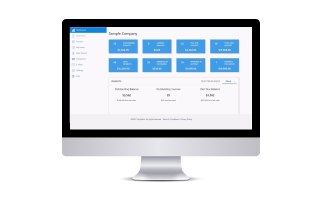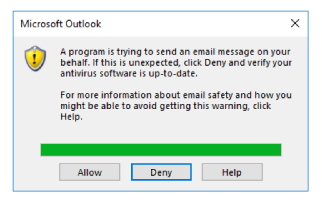We have all participated in projects during our career, either as a project manager or project team member. Some projects went very well, while others may have failed miserably. Many projects are nearly too small to qualify as a project, whereas others could have benefited from being broken into smaller pieces.
Starting with group projects in school, we learned that not everyone was fully committed to the project’s success. Indeed, that person always contributed the least possible, doing just enough to be counted as a member of the group.
In our professional life, we experience this lackadaisical attitude in our coworkers, service providers, vendors, and maybe even ourselves. Unfortunately, that lack of commitment can doom a project to failure. Here’s a simple guide to help overcome the many obstacles to successful project management.
INGREDIENTS OF A SUCCESSFUL PROJECT LAUNCH
Famously, Teddy Roosevelt is credited with saying we needed to “make the dirt fly” when the United States took over the Panama Canal project in 1904. About a year later, John Stevens stood up to Mr. Roosevelt and stopped all digging; he knew he needed time to understand the project and make a plan.
In his role as Project Manager for the building of the Panama Canal, Mr. Stevens was responsible for all aspects of the project, including budget, staffing, planning, and execution. He struggled with plenty of things, but he worked tirelessly to manage the resources available to him.
A Preparation Checklist for Successful Project Management
As with all projects, some basic things need to be considered at the outset including a focus on understanding the people involved and getting each of them engaged. It is essential to start any project with some preparation. A simplified list includes:
- Identify project scope and goals in detail. All stakeholders must agree on the ultimate goal.
- Confirm buy-in from all interested parties. Even the lowliest person on the team can sow dissension; it is easier to address this at the start of the project.
- Address doubts and concerns at the outset; similar to buy-in, ensure everyone is placated and motivated to move forward.
- Clarify the chain of command. Someone needs to be in charge, and everyone needs to know who that is. Rearranging priorities is usually necessary; that directive is best received from the top.
- Evaluate available resources to gauge the reasonableness of schedule and expectations (and repeat as needed throughout the project.) Do not set the team up for failure.
- Host periodic meetings to track progress and assign/prioritize tasks.
- Document and assign tasks clearly. Provide a list of tasks and expectations to the team after each meeting.
SELECT A QUALIFIED, PROACTIVE PROJECT MANAGER
A project of any size benefits from a project manager taking the lead. Something as simple as opening a new bank account might require several meetings, gathering signatures and reports, and follow-up with the representative at the bank should they fall short of expectations. It is easy to forget that keeping all of this together is project management.
Larger projects significantly benefit from adding a capable project manager to the team. A point person to track the goals, tasks, and the individuals involved, as well as having the power to hold people accountable for their part. Further, effective project managers will use their people skills to get the most out of an individual, tapping their strengths and backfilling for their weaknesses.
Most small or mid-sized companies do not have in-house project managers that are available to manage internal projects. In those cases, it is advisable to find and engage an external resource that has the appropriate experience and skillset to actively manage your project. An external project manager is normally more effective because they are not subject to the political pressures to which other employees are subject.
WHAT ABOUT MANAGEMENT OF SMALLER PROJECTS?
It is common for companies working on smaller projects to avoid engaging a project manager. The perception is that it isn’t necessary or won’t benefit the project. Additionally, many people have a story about a less-skilled project manager making things worse.
The fact is, without an appropriate leader, there is a risk of the project taking significantly longer than it should. For example, progress might be hindered if the group clashes with itself or lacks a natural leader. Or a strong personality might take over, potentially guiding the group down the wrong path.
With few exceptions, both small and large projects benefit from the coordination and leadership of a seasoned project manager.
MINIMIZE RISK IN YOUR PROJECT WHEREVER POSSIBLE
As a business leader, you are responsible for minimizing risk, particularly in projects, while maximizing profit. On the surface, it would appear that you shouldn’t take any risk in the first place, but that isn’t the answer. Instead, think of it as accepting the overarching risk – kicking off a new implementation – while committing yourself to minimize whatever facets of risk you can.
EXAMPLES OF RISKS IN A PROJECT
We see an oddly-consistent set of factors that cause projects to stumble. The most common are:
- Conflict between the vendor and employees: Each group sees things differently, resulting in distinct perspectives on each challenge or decision.
- Unqualified staff provided by the vendor: We all struggle to find exceptional staff; assigned resources might not be the best the vendor has.
- Immature or problematic software: Software is not always well written; quality issues can derail a project altogether.
- Overburdening staff: The contention between daily tasks and project-specific assignments must not be ignored; many employees do not have experience balancing disparate duties.
- Lack of accountability: Some team members will not complete their tasks as needed, possibly holding up the whole project.
- Excessive technical issues: All manner of technical problems can interfere with the completion of a project.
Each of these is difficult to address, but an experienced project manager will help keep things moving forward.
BRIDGING THE GAP WITH A PROJECT MANAGER
An effective leader can drag a rag-tag team through the worst situations and still produce the deliverables. That is the role of a project manager: gather the whole team together, get the best out of each of them, and bring the project to a successful conclusion.
PERSISTENCE BEGETS SUCCESS IN PROJECT MANAGEMENT
We frequently see projects fall apart when a subset of the team is no longer interested. Typically, it is a small or straightforward project spearheaded by a single individual, but there are many examples of failure with more complex projects. We all know that efforts to change processes – even those with considerable promise – are challenging to complete.
Abandoning a project before completion causes the organization to absorb a sunk cost; it can be the right move, but such an abandonment needs to be a conscious decision on the part of management.
Did You Know?
A conscious decision involves evaluating all available information before making a choice. It is the antithesis of shooting from the hip.
CLOSING OUT A PROJECT
When a project is finally completed, there are still a few things to consider. The focus is on learning what could have gone better.
GATHER TOGETHER FOR A POST-MORTEM
This meeting will not be popular with the team, but learning as much as possible is important while the memories are still fresh. Ask questions to get the group talking about what went well and what they would do differently next time. Make notes of the conclusions and reference them on the next project.
FOLLOW UP ON DOCUMENTATION
Using the list of goals as a basis, ensure the documentation is complete for each process. Additionally, gather other documentation related to design, development, and revisions. It is common to have questions later that can be answered by this documentation.
Archive, date, and disseminate the documentation to relevant parties; an official collection of the final documents is invaluable when researching questions in the future.
CELEBRATE THE WIN!
The capstone of a successful project should be a celebration. Splurge on an amazing dinner if you spent two years implementing new software. Or, just some high-fives in the breakroom for something simple. Whatever it is, the team should know that it is finished, and you are proud of them.
KEY TAKEAWAYS ON SUCCESSFUL PROJECT MANAGEMENT
Not every project demands or would benefit from a seventeen-step project checklist, but some steps apply to every project. For me, the shortlist is: understanding the goals, getting buy-in, and gauging how realistic the project is. That small investment will pay dividends, and practicing on each project will make the steps second nature.
NEED SOME HELP WITH A PROJECT?
Managing projects is challenging. It requires a combination of soft skills, technical skills, and organization that aren’t always found in one person. A talented project manager is rare and invaluable. It is always a pleasure to work with such a person.
If you are struggling with your technical projects, please contact us to learn more about Telmar’s Technical Project Management services. Our extensive experience with projects and implementations will benefit your company as we work with your team and your vendors to ensure the best outcome for your project.
NEED HELP MAKING YOUR DYNAMICS GP ENVIRONMENT SIMPLER TO MANAGE?
Learn how the Telmar Team can help!
Telmar Computer Solutions, Inc. is providing the information in this publication as a courtesy, free of charge, to share information with the general public. Nothing in this publication is intended to be, nor should be, interpreted as advice or consultation on any matter, including taxes, accounting, business management, system configuration or operation, or any other similar topic. Please engage the services of an appropriate professional for assistance in these areas. Telmar Computer Solutions, Inc. is not responsible for any loss, including downtime, lost files/data, rework, or other expenses sustained by you, your company, or any person who relies on this publication.
Other Posts You May Be Interested In…
Partner Spotlight: Customer Payment Portal by Nodus
Nodus, a valued Telmar partner, offers an amazing payment portal tool called PayFabric. This tool is tightly integrated with Dynamics GP which dramatically simplifies the Customer Payment process. With Nodus’ PayFabric Receivables, companies can offer their customers 24/7 access to their account to view and pay their invoices.
MAPI, SIMPLE MAPI AND OUTLOOK SECURITY
A Client recently deployed a new RDS Server farm to run a variety of applications, including Dynamics GP. About a week after going live the client ran a monthly process that involves generating emails from an add-on software package intended to simplify AR collections. Unfortunately, on the new server, when the user triggered the email, the following prompt showed up: "A program is trying to send an email message on your behalf. If this is unexpected, click Deny and verify your antivirus software is up-to-date."



0 Comments